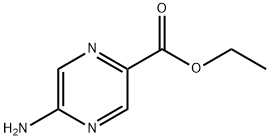New research indicates that merely rinsing with tap water might not be enough to thoroughly eliminate certain stubborn pesticides. What about using fruit and vegetable cleaners? Do they work better, or could they introduce new chemical residues? Also, we've heard about soaking in salt water or baking soda solution. How effective are these methods? Can they really break down and remove different types of pesticides on apples? And what about the claims that peeling apples can solve the problem? Does peeling remove all the pesticide residues, or are there some that have already penetrated deeper into the fruit?
The Latest Research Reveals: How Can We Remove Pesticide Residues from Apples?
Related Products More >
-
- 93924-19-7
- equest For Quotation
- 1kg/bag,25kg/drum,25kg/bag
-
- 90669-76-4
- equest For Quotation
- 25kg/Cardboard Drum
-
- 84961-70-6
- equest For Quotation
- 25
-
- 84961-70-6
- equest For Quotation
- 170kg/drum
-
- 84961-70-6
- equest For Quotation
- 250KGD/DRUM
-
- 70131-50-9
- equest For Quotation
-
- 1190630-03-5
- equest For Quotation
- kg



 沪ICP备2021018848号-5
沪ICP备2021018848号-5

They mainly studied two pesticides. One is dinotefuran, which is a nicotinoid insecticide. When there are pests such as aphids and leafhoppers on many crops like wheat, rice, and fruit trees, it is often used for prevention and control. The other is flonicamid, an organic compound used to deal with piercing-sucking mouthpart pests such as aphids.
The research found that these two pesticides have significant differences in half-life under different application dosages. Fortunately, the final residue amounts under different dosages are all lower than the maximum residue limit. Moreover, during low-temperature storage, the degradation of pesticides slows down, and the half-life is extended.
So, the key question is, how to remove these pesticide residues on apples? The research shows that during the apple processing process, the residue concentrations of these two pesticides and their metabolites will decrease. For example, when it comes to cleaning, using tap water, sodium chloride (that is, the salt we eat), sodium carbonate, sodium bicarbonate, and citric acid solutions to wash apples, the pesticide residue processing factors are all less than 1. What does this mean? It means that these methods can all reduce pesticide residues. And the longer the washing time and the higher the concentration of the washing solution, the lower the value of the pesticide residue processing factor, and the better the removal effect. Among them, using tap water with sodium bicarbonate and washing for 15 minutes has the best removal effect. In addition, if the pesticide has a low octanol-water partition coefficient, it is easier to be washed off.
Also, during the peeling and fermentation processes, the residue amounts of dinotefuran, flonicamid, and their metabolites can be significantly reduced. However, during the processing process, the reduction rate of metabolites is slower than that of the parent pesticides themselves.
Finally, after risk assessment, people of any gender and age group will not face significant dietary risks when eating apples with residues of these two pesticides, and the dietary exposure risk is acceptable.
So, to sum it up, if you want to remove pesticide residues on apples, we can add some sodium bicarbonate to tap water and wash for 15 minutes. If you don't mind the trouble, peeling the skin also has a very good effect. If you have the conditions to make fermented apple products, it can also reduce pesticide residues. These methods are based on scientific evidence, and everyone can use them with confidence. From now on, we can eat apples more safely.